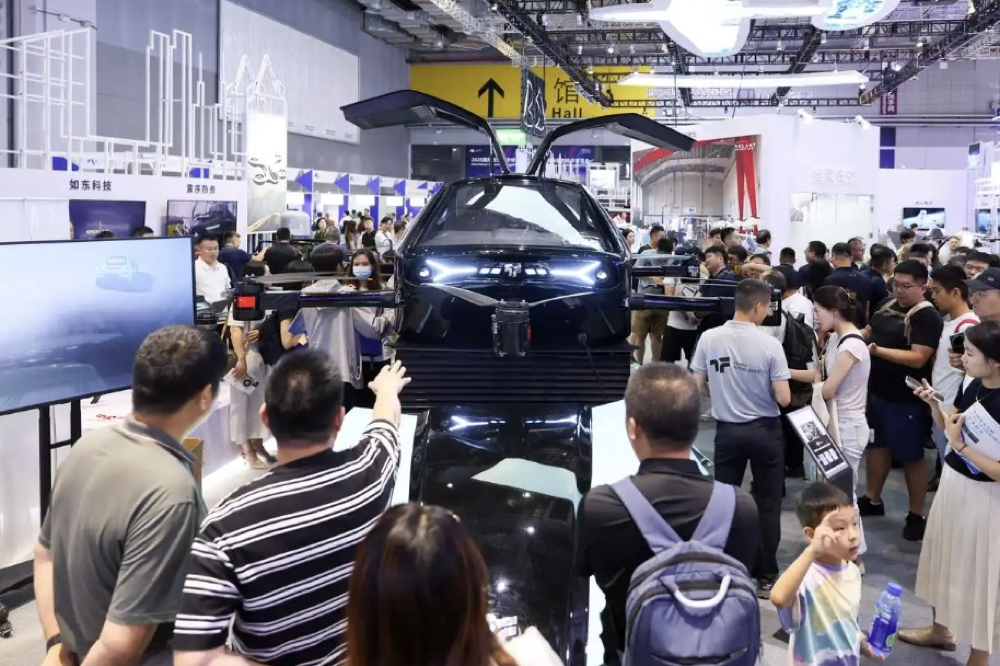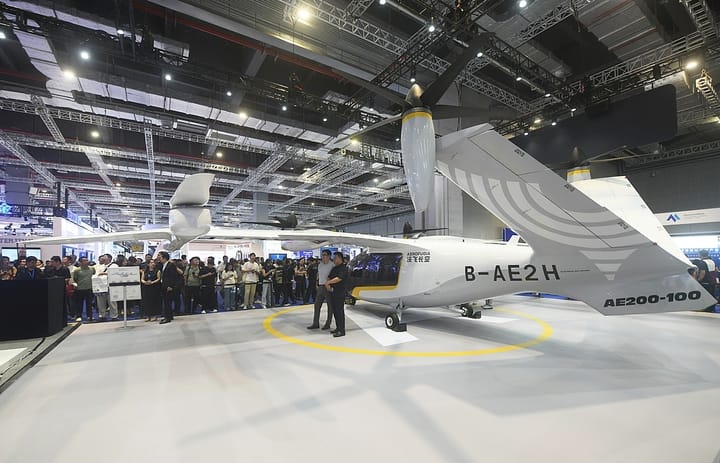China's Low-Altitude Economy Soars, Confronts Technical Hurdles

A drone travelling at 15 meters per second delivered a 26-kilogram package of watermelons, roasted duck, and chilled beverages to the cargo ship Runxingji 118 near the Xinglongzhou Green Comprehensive Service Area on the Yangtze River. This highlights the rapid growth of China’s low-altitude economy, even as experts warn of unresolved technical challenges.
New Era of Logistics Unveiled
The delivery, conducted without interrupting the ship’s voyage, exemplifies the transformative potential of low-altitude applications. "It’s incredibly convenient," said crew member Zhang Yifan. "We used to waste hours docking or going ashore for supplies. Now, we order via an app and receive goods mid-sail."
Since its inclusion in China’s 2024 Government Work Report, the low-altitude economy has spurred innovations in logistics, tourism, and emergency response. The Civil Aviation Administration of China predicts the sector’s market value will reach 15 trillion yuan ($2.1 trillion) by 2025. Yet, experts stress that technical bottlenecks threaten to stall this momentum.
Battery Breakthroughs Needed to Power Flight
At the core of the challenge lies the "unreachable triangle" of aviation batteries: balancing energy density, power density, and safety. Current lithium-ion batteries cap electric aircraft at carrying "two to three tons, four to five passengers," according to Wu Ximing, chief technical expert at Aviation Industry Corporation of China (AVIC).
Key hurdles include:
- Energy vs. Safety: Achieving 400Wh/kg energy density risks thermal instability. Higher density increases electrode-electrolyte reactivity, raising explosion risks.
- Power Trade-offs: Prioritising range sacrifices power output needed for rapid ascent; vice versa.
- Weight Dilemma: Cooling systems added for safety increase aircraft mass, requiring even higher energy density.
The Ministry of Industry and Information Technology’s 2024–2030 General Aviation Equipment Innovation Application Plan aims to achieve 400Wh/kg commercial batteries by 2027 and 500Wh/kg prototypes by 2030. Companies like CATL, BYD, and EHang are racing to meet these goals.
Communication Gridlock in the Skies
While dazzling drone light shows—like Chongqing’s 11,787-drone record spectacle—demonstrate technical prowess, they also expose communication vulnerabilities. "Coordinating 10,000 drones risks network congestion," said Liu Hanbin, CEO of Shenzhen-based DM Aviation. Existing WiFi, 5G, and satellite systems struggle with latency, bandwidth, and signal blockage.
Solutions under development include:
- 5G-Advanced: Adjusting base station tilt angles to "lift antennas" for low-altitude coverage.
- Dedicated Networks: Using 1.4GHz bands for specialised applications like policing.
- Satellite Integration: Expanding coverage via low-earth orbit constellations.
ZTE proposes beamforming technology to dynamically allocate air-to-ground communication resources. "Our adaptive systems detect drone locations and optimise signal beams," explained Zhao Zhiyong, general manager of ZTE’s Sensing Product Division.
Safety in Crowded Skies
With 3.87 million registered drones and over 500,000 daily flights, safety risks escalate. "Sixty per cent of accidents occur during takeoff/landing, often due to electromagnetic interference," noted Wu Qihui, vice president of Nanjing University of Aeronautics and Astronautics. His team’s drone-based interferometer system now helps locate signal jammers in Nanjing.
Other initiatives include:
- Micro-Weather Modelling: Creating hyper-local "weather maps" to predict low-altitude turbulence.
- Airspace Digitisation: Segmenting skies into 10m³ units for real-time monitoring of obstacles and conditions.
Regulatory frameworks are accelerating. The 2024 Unmanned Aircraft Flight Management Regulation and 2025 national safety standards establish foundational rules. On July 18, 2025, the National Development and Reform Commission convened a summit to align safety protocols with industry growth.
Toward a Sustainable Future
From watermelon deliveries to future air taxis, experts agree: low-altitude economies must prioritise "visible, controllable, and communicable" systems. "Only by conquering core technologies—from batteries to AI navigation—can this $2 trillion market achieve lasting flight," concluded Wu Ximing.
Source: STdaily

